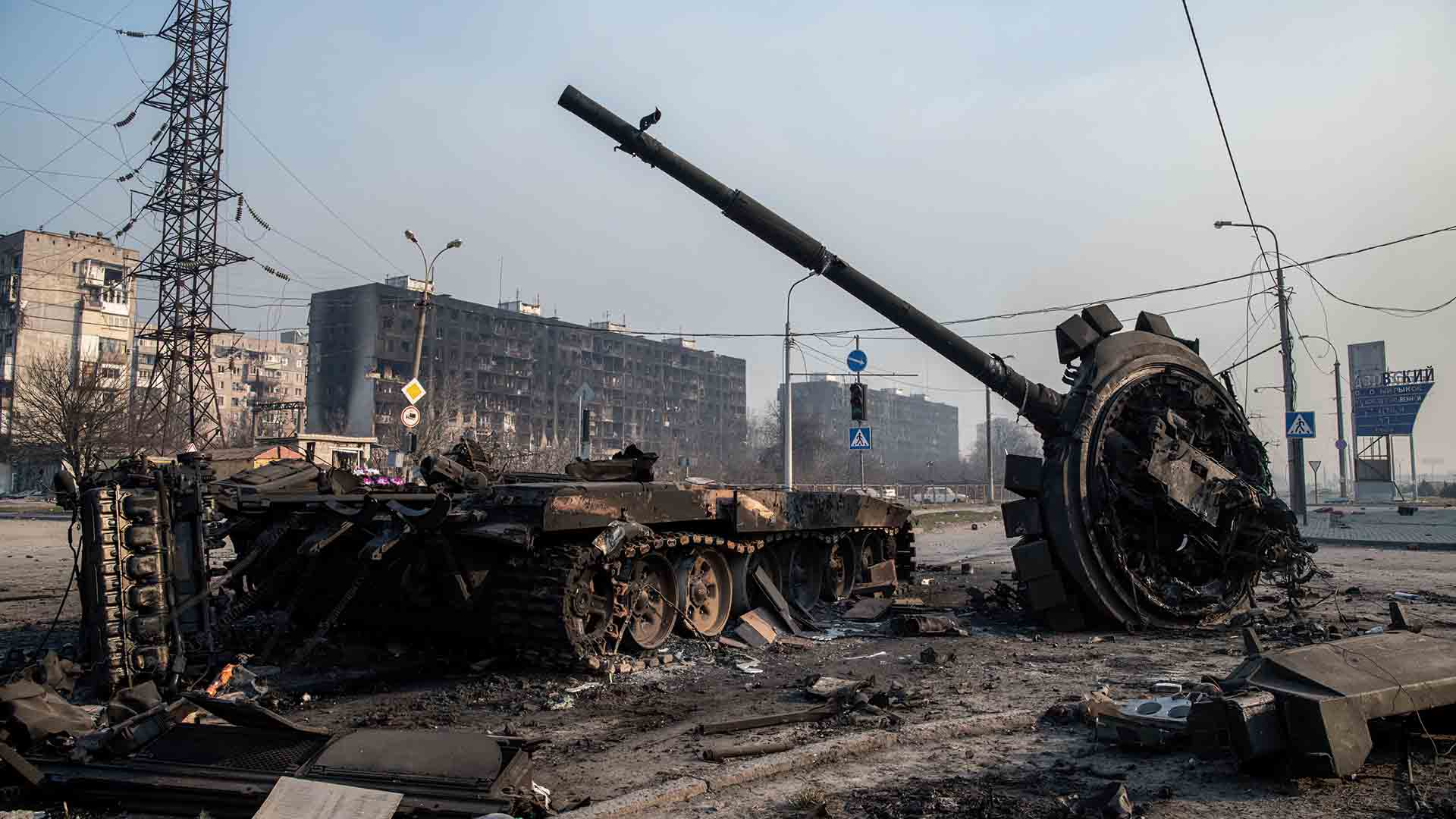
An aficionado of legendary narrator Sir David Attenborough has created a lovely tribute to the BBC’s nature documentaries with a brief video that treats Russian tanks as if they were an animal species that migrates to Ukraine to die.
The 45-second video was posted on Twitter on Monday – one day after Attenborough’s 96th birthday – just as Russian President Vladimir Putin was celebrating the anniversary of the Soviet Union’s victory over Nazi Germany, which was somewhat tempered this year by Russia’s lack of success in Ukraine.
Subscribe to Task & Purpose Today. Get the latest in military news, entertainment, and gear in your inbox daily.
The mockumentary features either drone video or a computer simulation of a knocked-out Russian tank with smoke dribbling out of its main gun and open turret hatch accompanied by a voice-over about how this fighting machine met the end of its corporeal existence.
“Like the Pacific Salmon, Russian tanks migrate long distances from the abyss of Russia to end their lives in Ukraine’s beautiful fields,” says the narrator, who has a somewhat believable British accent. “Driven by an evolutionary desire to end their life somewhere better, after reaching Ukraine, all species of Russian tank die.”
That’s not too far from reality. Since late February, the world has seen just how vulnerable Russian tanks are to shoulder-fired anti-tank weapons, such as Javelins and Next generation Light Anti-tank Weapon, both of which the United States and other NATO allies have been sending to Ukraine in mass quantities.
The exact number of Russian tanks lost in Ukraine is unknown. Ukraine’s defense ministry recently claimed that 1,145 Russian tanks have been destroyed since the start of the Russian invasion in February, but Ukraine is also waging an information war, so that figure may very well be too high.
In the homage to Attenborough, our friend and humble narrator explains that this year’s migration of Russian tanks to Ukraine “was a major event for predators,” including Ukrainian special operators, Turkish-made Bayraktar TB2 drones, and even “local farmers on tractors.”
To foot stomp that last point, numerous videos have appeared on social media showing Ukrainians in tractors hauling abandoned or damaged Russian tanks, fighting vehicles, and artillery. The revenge of the tractors is poetic justice for Ukraine, which suffered a catastrophic man-made famine under the Soviet Union’s psychotic despot Joseph Stalin – his slightly less psychotic successor Nikita Khrushchev later unsuccessfully tried to grow corn in Ukraine in one of his harebrained schemes, like putting nuclear missiles in Cuba.
Nevertheless, the video’s narrator makes a very cutting remark about how Russian tanks go to the great boneyard in the sky: “Most tank species pop their turrets to celebrate the end of their life cycles.”
That is a reference to how Russian-made T-72 and T-80 tanks store ammunition in a way that almost guarantees that all the rounds will explode if the tank is hit, hurling the turret straight up into the air. This phenomenon is known as the “jack in the box effect,” and pictures and videos have been rife on social media showing decapitated Russian tanks.
For more information about why the Russians would include such a fundamental design flaw in their main battle tanks, you can go to your local library and read about “The Good Idea Fairy,” which is the source of other historic blunders including Russia’s decision to invade Ukraine in the first place and the PT belt.
The latest on Task & Purpose
Want to write for Task & Purpose? Click here. Or check out the latest stories on our homepage.
